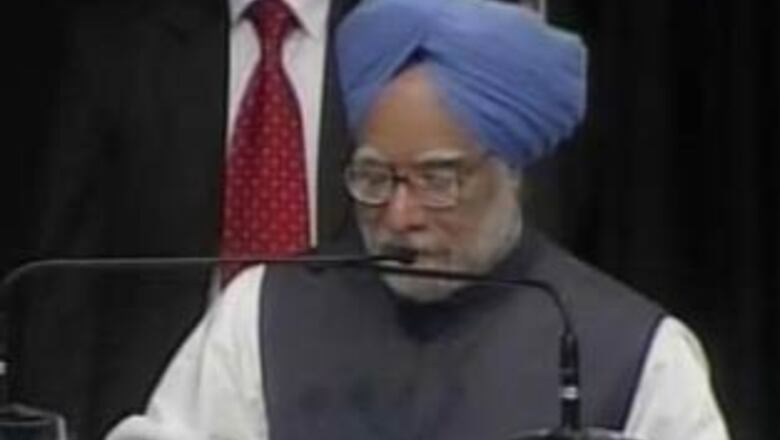
views
New Delhi: India's mission to launch 20,000 MW through solar power by 2022 was launched on Monday by Prime Minister Manmohan Singh, who said the target was "ambitious" but "doable" and should be taken up as a "priority national endeavour".
Launching the Jawaharlal Nehru National Solar Mission under the brand name Solar India, the Prime Minister pointed out that the mission had "pride of place in India's National Action Plan on Climate Change. Its success has the potential of transforming India's energy prospects, and contributing also to national as well as global efforts to combat climate change".
Manmohan Singh called the renewable energy mission "one of the major priorities of the second term of our government".
Saying this would be "a strategic shift from our current reliance on fossil fuels to a pattern of sustainable growth based on renewable and clean sources of energy", he also hoped it would "establish India as a global leader in solar energy, not just in terms of solar power generation but also in solar manufacturing and generation of this technology".
The Prime Minister pointed out that the importance of the mission went beyond "providing large-scale grid connected power. It has the potential to provide significant multipliers in our efforts for transformation of India's rural economy".
"Already, in its decentralised and distributed applications, solar energy is beginning to light the lives of tens of millions of India's energy-poor citizens. The rapid spread of solar lighting systems, solar water pumps and other solar power-based rural applications can change the face of India's rural economy."
"The Government intends to "significantly expand such applications through this mission", he added.
Manmohan Singh said: "The target of 20,000 MW of solar generating capacity by the end of the 13th Five Year Plan (2018-2022) is no doubt an ambitious target. But I do sincerely believe that the target is doable and that we should work single-mindedly to achieve it as a priority national endeavour."
The mission, to be administered by the ministry of new and renewable energy, has a regulatory and incentive framework to boost solar generating capacity. However, only about 4,000 of the 20,000 MW may be connected to the national electricity grid, because the cost of subsidising the entire amount was working out to Rs 270,000 crore over 20 years.
Firms generating solar power for the grid will get a "feed-in" tariff (to make them competitive) of Rs 17.50 per unit, of which Rs 5.50 will be paid by utilities buying the power and the rest by the central government. For 4,000 MW, the cost to the Government has been worked out at Rs 90,000 crore over 20 years.
Manmohan Singh hoped the new laws and incentives would "lead to a rapid scale up of capacity. This will encourage technological innovation and generate economies of scale, thereby leading to a steady lowering of costs. Once parity with conventional power tariff is achieved, there will be no technological or economic constraint to the rapid and large-scale expansion of solar power thereafter".
He stressed the need for technological innovation. "We will need to find ways of reducing the space intensity of current solar applications, including through the use of nano-technology. Cost-effective and convenient storage of solar energy beyond daylight hours will be critical to its emergence as a mainstream source of power.
"In the meantime, we may need to explore hybrid solutions, combining solar power generation with gas, biomass or even coal-based power."
The Prime Minister said he was "convinced that solar energy can also be the next scientific and technological frontier in India after atomic energy, space and information technology".
He welcomed the involvement of Indian industry in the mission. "If the ambitious rollout of the mission is to become a living reality, we will have to create many 'Solar Valleys' on the lines of the Silicon Valleys that are spurring our IT industry across the four corners of our country.
"These valleys will become hubs for solar science, solar engineering and solar research, fabrication and manufacturing. I urge Indian industry to see the national solar mission as the huge business opportunity that it is going to be."


















Comments
0 comment